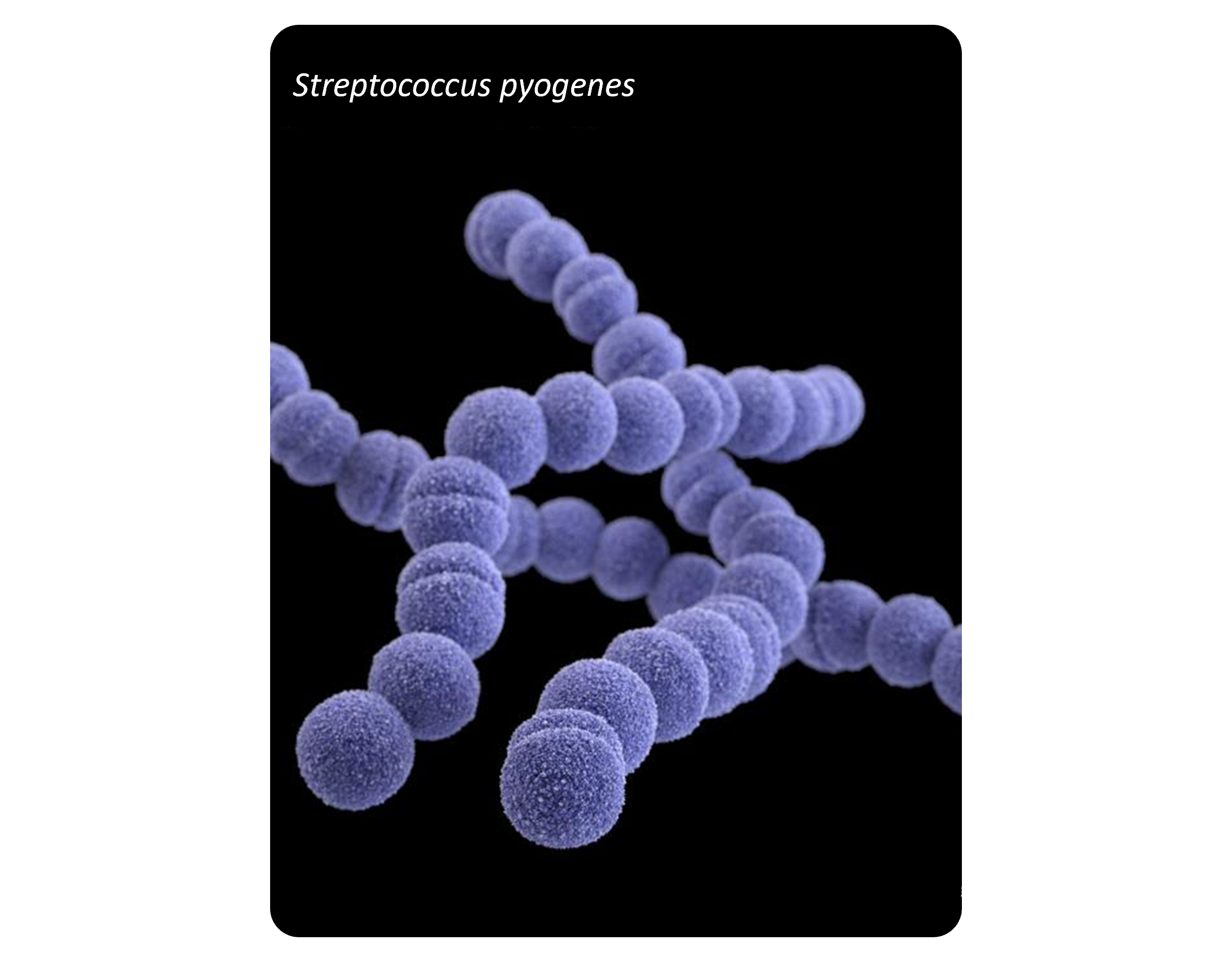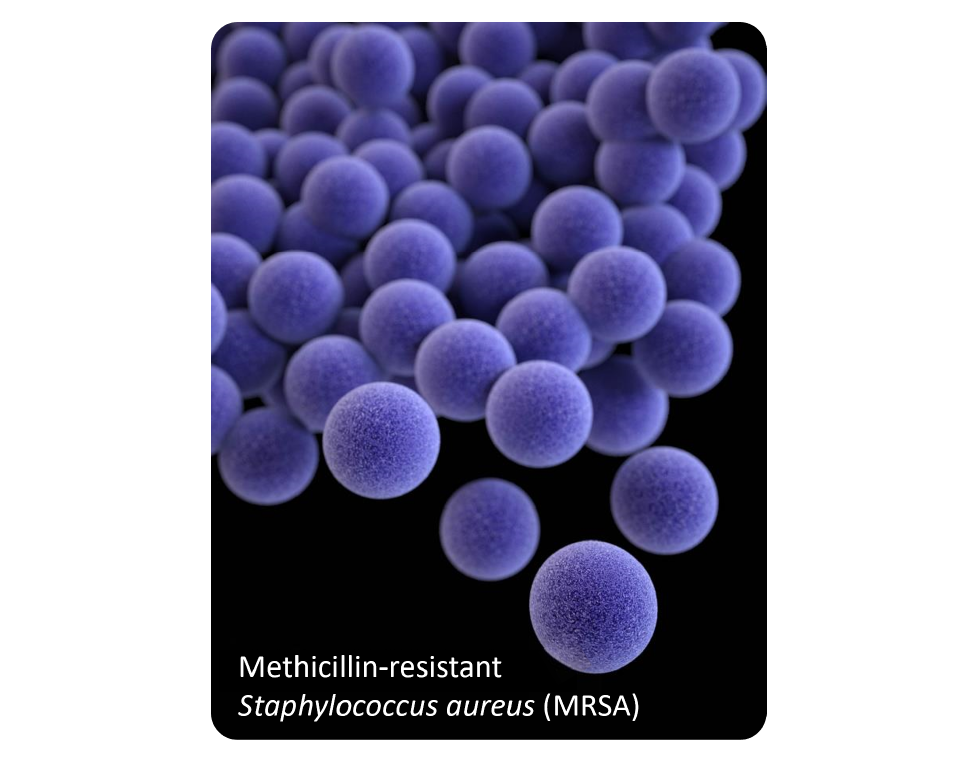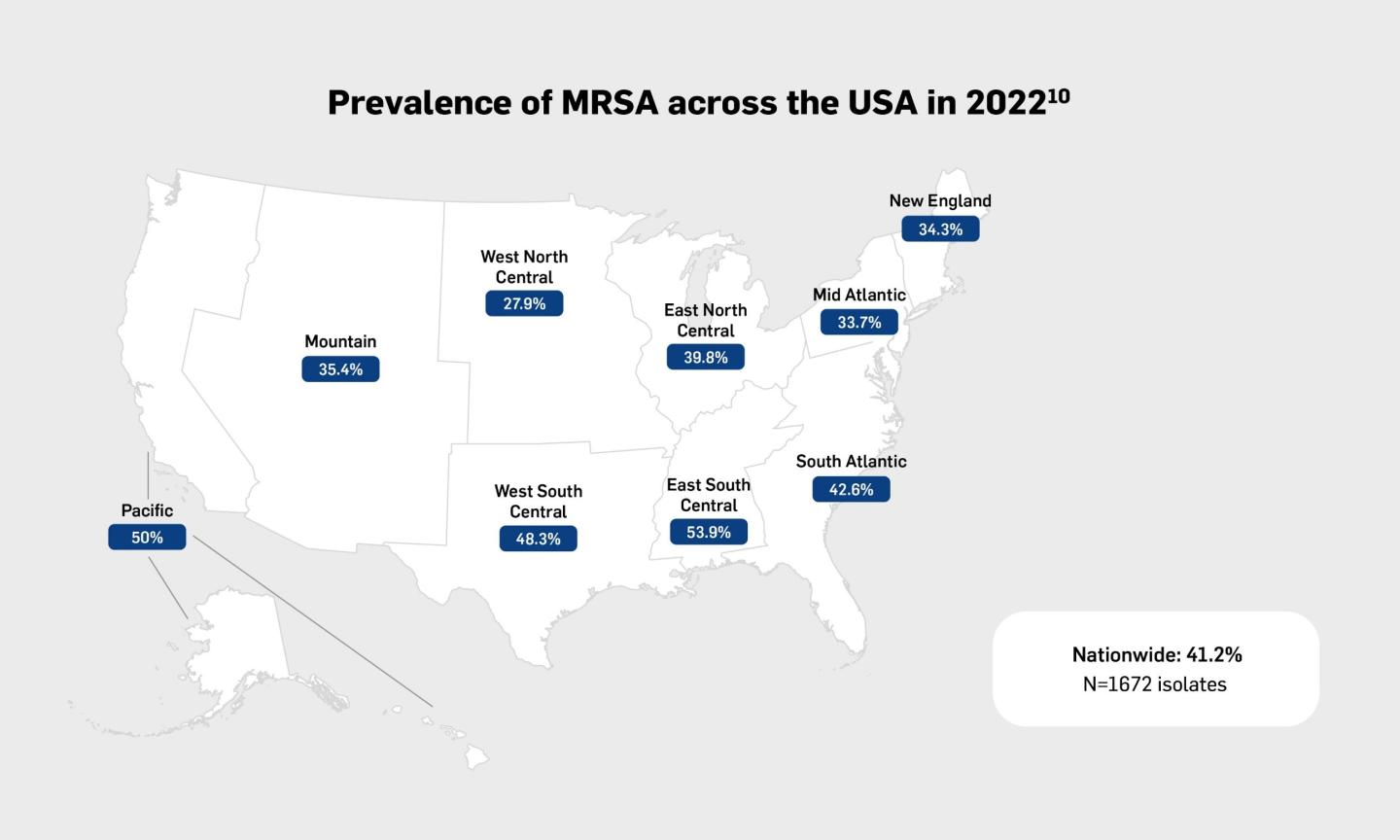Non-purulent infections: which include cellulitis and erysipelas, are most frequently caused by Streptococcus pyogenes and other BHS.1-3 Cellulitis is the most common type of skin and soft tissue infection in patients who are hospitalized for treatment, accounting for close to 60% of cases.2

This illustration depicts a three-dimensional (3D), computer-generated image, of a group of Gram-positive, Streptococcus pyogenes (group A Streptococcus) bacteria. The artistic recreation was based upon scanning electron microscopic (SEM) imagery.
Image courtesy of the Antibiotic Resistance Coordination and Strategy Unit - Medical Illustrator, via the Public Health Image Library of the Centers for Disease Control and Prevention
Purulent infections such as abscesses and wound infections are frequently caused by Staphylococcus aureus, including MRSA. Wound infections may also be caused by Gram-negative or anaerobic bacteria.1,5,6

This illustration depicts a three-dimensional (3D) computer-generated image of a group of methicillin-resistant Staphylococcus aureus (MRSA) bacteria, which were arranged in a cluster. The artistic recreation was based upon scanning electron microscopic (SEM) imagery.
Image courtesy of the Antibiotic Resistance Coordination and Strategy Unit - Medical Illustrator, via the Public Health Image Library of the Centers for Disease Control and Prevention



